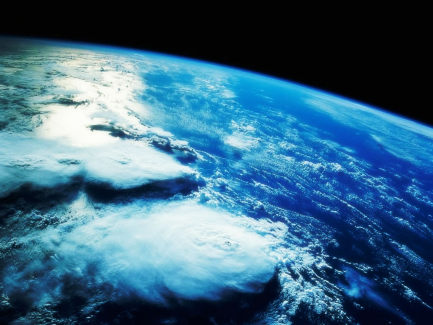By Jason Ho (Contributor) – Email
Date Posted: September 28, 2011
Print Edition: September 21, 2011
Global warming. Climate change. These phrases are becoming more and more common in the media as governments, the press, scientists, and basement bloggers debate this controversial topic. For every point in support of human-induced (or anthropogenic) global warming, there are crowds of skeptics. But why is it such a heated debate? Is it because of people’s resistance to change, or is there an ambiguity in the evidence? What, in fact, is the evidence? Given the scandals and conflicting scientific reports, it’s difficult to sift through the murkiness to find what the firm scientific foundation to these claims of anthropogenic global warming are. This week, let us take a look at perhaps the most familiar concept of global warming: the greenhouse effect.
The concept of what is now called the “greenhouse effect” was first suggested by the physicist and mathematician Jean Baptiste Joseph Fourier in the 1820s, who calculated that if the Earth were only being heated by the Sun alone, the average temperature on the planet should be much lower than what was observed. One of the suggestions he put forth considered the possibility that the atmosphere of the Earth acted as an insulator, much like a blanket keeps you warm when it’s cold out.
In the mid-1800s, physicist John Tyndall had determined that both water vapour and carbon dioxide (CO2), both common atmospheric gases, were quite effective at absorbing heat. Then, before the beginning of the 1900s, a connection between global temperatures and atmospheric gases was made by physicist Svante Arrhenius, who was attempting to explain the ice ages, and speculated that decreasing the levels of CO2 in the atmosphere could affect temperatures enough to induce an ice age.
The reason Arrhenius chose to focus on the greenhouse gas CO2 rather than water vapour (which was more efficient at absorbing heat), was that CO2 levels were generally more consistent than water vapour levels in the atmosphere, as water vapour cycles are regulated by precipitation and evaporation while CO2 cycles are regulated by more long-term cycles such as volcano emissions and the process of CO2 dissolving into the oceans. In the 1960s, explorations of the planet Venus showed (on a much larger scale) the effectiveness of CO2 in determining a planet’s climate.
From data collected by the Soviet Venera probes, the atmosphere on Venus was determined to be comprised of around 95% CO2. Compared to its atmosphere-deficient neighbour, Mercury (which is much closer to the sun than Venus), it was found that Venus is always hotter than Mercury, even when comparing Mercury’s hottest temperature to Venus’ lowest.
The mechanism for the greenhouse effect is reliant on the gases contained in the atmosphere. The Earth’s atmosphere is made up of a collection of gases, but water vapour, CO2, methane, nitrous oxide, and ozone are the naturally occurring gases often referred to as “greenhouse gases”. There are also a variety of greenhouse gases called chlorofluorocarbons, but those are not found naturally, and are most definitely anthropogenic in origin.
As sunlight hits the Earth, light is absorbed by the surface of the Earth, which is then radiated in the form of infrared thermal radiation (heat). The heat which is released from the ground travels upwards, and the atmosphere absorbs some of this thermal radiation. The atmosphere then radiates some of this energy back towards the ground, trapping the heat inside the atmosphere. According to a 2002 article in the Encyclopedia of Global Change, Environmental Change and Human Society, the average temperature of the Earth would be around -18°C without the atmosphere to provide this warming effect.
Of course, the Earth is a complex system, and many other factors contribute to the warming effect observed from varying the concentrations of greenhouse gases. For example, although perhaps the effect of the concentrations of CO2 in the atmosphere is less than the effects of water vapour, an increase in CO2 producing a slight increase in temperature would in turn affect the amount of water vapour in the atmosphere. However, on a qualitative scale, the effects of increasing concentrations of greenhouse gases are quite clear. Over the next few weeks, we will examine more evidence in this column, as well as the effects such warming has had – and will have – on our world.


